Epimedium koreanum
Epimedium koreanum
1. The products in our compound library are selected from thousands of unique natural products; 2. It has the characteristics of diverse structure, diverse sources and wide coverage of activities; 3. Provide information on the activity of products from major journals, patents and research reports around the world, providing theoretical direction and research basis for further research and screening; 4. Free combination according to the type, source, target and disease of natural product; 5. The compound powder is placed in a covered tube and then discharged into a 10 x 10 cryostat; 6. Transport in ice pack or dry ice pack. Please store it at -20 °C as soon as possible after receiving the product, and use it as soon as possible after opening.

Natural products/compounds from Epimedium koreanum
- Cat.No. Product Name CAS Number COA
-
BCN2285
Sagittatoside A118525-35-2
Instructions
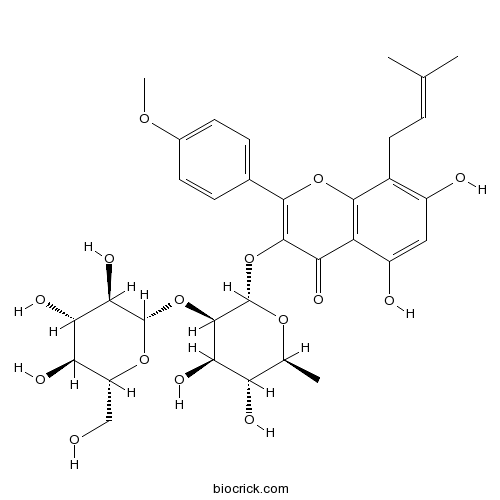
-
BCN2357
Sagittatoside B118525-36-3
Instructions
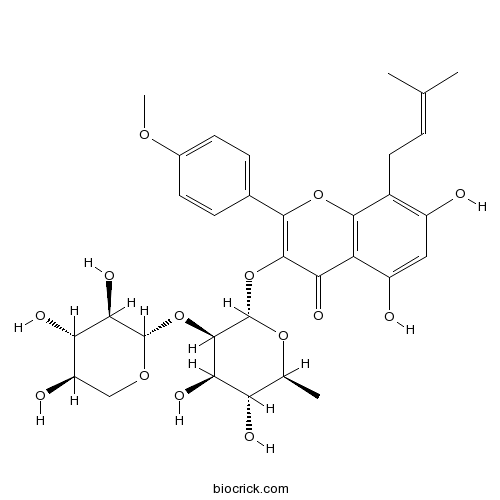
-
BCN5351
Anhydroicaritin38226-86-7
Instructions

-
BCN2319
Ginkgetin481-46-9
Instructions
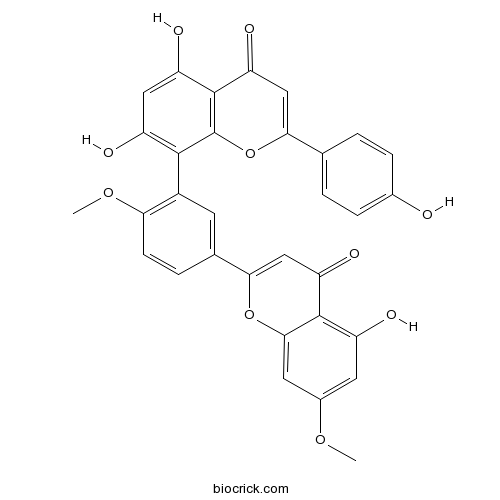
-
BCN5600
Luteolin491-70-3
Instructions
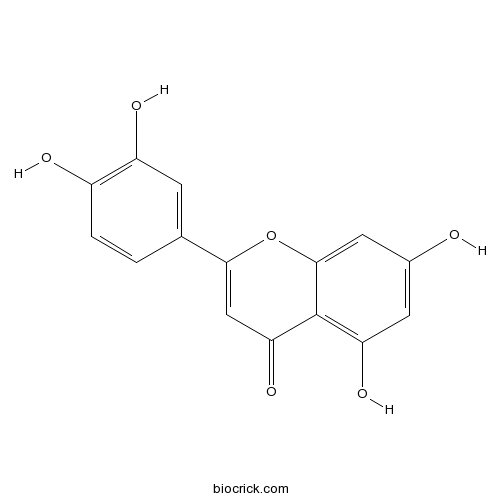
-
BCN5661
Bilobetin521-32-4
Instructions

-
BCN2320
Isoginkgetin548-19-6
Instructions
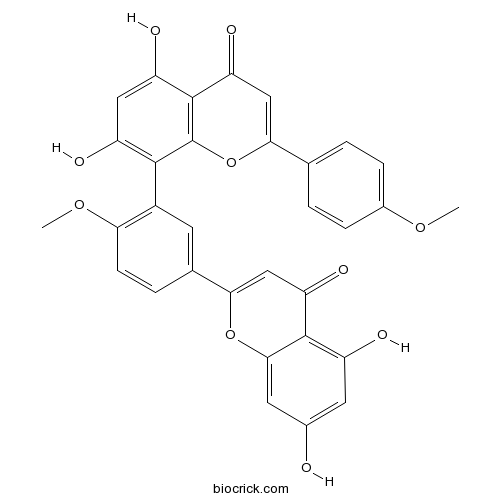
-
BCN3463
Icariside I56725-99-6
Instructions

-
BCN5946
Liquiritigenin578-86-9
Instructions

-
BCN5907
Cryptochlorogenic acid905-99-7
Instructions

-
BCN4512
Isoliquiritigenin961-29-5
Instructions
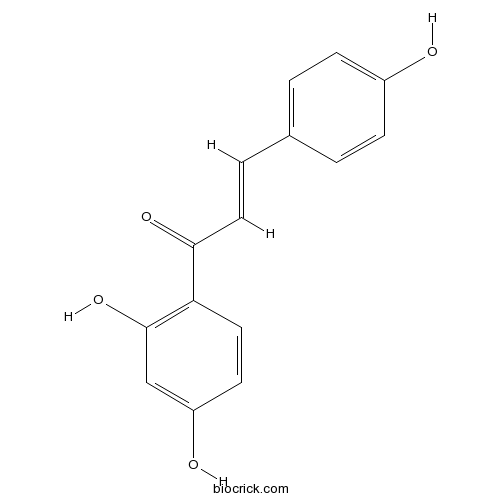
Structural analysis and antioxidant activities of neutral polysaccharide isolated from Epimedium koreanum Nakai.[Pubmed: 29891293]
The structure and antioxidant activity of a neutral polysaccharide (named as EFPN-1) from Epimedium koreanum Nakai were studied. Based on the results from high performance gel permeation chromatography, methylation GC-MS and 1D/2D nuclear magnetic resonance spectroscopy, EFPN-1 was a branched polysaccharide with a molecular weight of 21.9 kD and containing over 60% of glucose. Its backbone was composed of (1 → 4)-β-d-Glcp and (1 → 3)-β-d-Galp, branched partially at O-6 of both residues, with a degree of branching of 40.4% and terminated mainly with Ara and Gal, as well as trace amount of Gal. Antioxidant tests showed that EFPN-1 exhibited a strong capacity on DPPH and hydroxyl radical scavenging, ferrous ion chelation and reducing antioxidant powder. EFPN-1 has potential to be developed as a natural antioxidant.
Effect of drying processes on prenylflavonoid content and antioxidant activity of Epimedium koreanum Nakai.[Pubmed: 29567251]
Epimedium koreanum Nakai is a famous Chinese herbal medicine for the treatment of impotence, osteoporosis, immune suppression and cardiovascular diseases. Drying is the most common and fundamental procedure in post-harvest processing of E. koreanum, which contributes to the variations of flavonoid content, especially prenylflavonoids, the bioactive components. In present study, effect of drying processes on flavonoid content and antioxidant activity were investigated. High performance liquid chromatography coupled with diode-array detection and electrospray ionization quadrupole time-of-flight tandem mass spectrometry methods were employed. Twenty seven compounds were identified and 11 of them, including eight prenylflavonoids and three other types of flavonoids, were further quantified. The antioxidant activity of E. koreanum was evaluated by the 2,2-diphenyl-1-picrylhydrazyl free radical scavenging method. The results showed that content of the eight prenylflavonoids exhibited significant variations after different drying processes, especially icariin and baohuoside I. The variation tendency of antioxidant activity was positively correlated with the content of total flavonoid, afzelin and icariin.
Epimedium koreanum Ameliorates Oxidative Stress-Mediated Liver Injury by Activating Nuclear Factor Erythroid 2-Related Factor 2.[Pubmed: 29433393]
None
Chemical constituents from Epimedium koreanum Nakai and their chemotaxonomic significance.[Pubmed: 29157003]
In this study, 21 compounds were isolated from the aerial parts of Epimedium koreanum Nakai, including 6 phenols (1-5 and 10), 4 lignans (6-9) and 11 flavonoids (11-21). The chemical structures of those isolates were established after extensive one-and two-dimensional nuclear magnetic resonance and mass spectroscopy analyses. This is the first report of compounds 2, 3, 4 and 9 in E. koreanum and of compounds 5 and 7 in the family Berberidaceae. The chemotaxonomic significance of the isolated compounds is discussed.
Epimedium koreanum Nakai inhibits PMA-induced cancer cell migration and invasion by modulating NF-κB/MMP-9 signaling in monomorphic malignant human glioma cells.[Pubmed: 29130110]
Previously, we showed that the herbal extract EYK (Epimedium koreanum Nakai) can regulate the immune response. Other studies showed that EYK has beneficial effects in human lung cancer, angiogenesis and Alzheimer's disease (AD). However, it remains unknown whether EYK can affect cancer cell migration and invasion in human brain cancer cell lines. In the present study, we found that pre- or post-treatment with EYK inhibited phorbol 12-myristate 13-acetate (PMA)-induced cancer cell migration and invasion in A172 cells, but not in U373MG or T98G cells. Additionally, pre- or post-treatment with PMA followed by EYK decreased MMP-9 activity in A172 cells. Moreover, treatment with a NF-κB inhibitor significantly decreased cell migration in A172 cells pre- or post-treated with EYK and PMA, suggesting that EYK requires NF-κB to alter cancer cell migration. Either pre- or post-treatment with EYK significantly decreased NF-κB nuclear translocation in comparison with PMA treatment. Taken together, our results suggest that EYK suppresses PMA-induced cancer cell migration in monomorphic malignant human glioma cells by downregulating the NF-κB pathway and decreasing MMP-9 activity.
Restoration of Spermatogenesis Using a New Combined Herbal Formula of Epimedium koreanum Nakai and Angelica gigas Nakai in an Luteinizing Hormone-Releasing Hormone Agonist-Induced Rat Model of Male Infertility.[Pubmed: 29076302]
We investigated the protective effect of a mixture of 2 herbal extracts, KH-465, which consisted of Epimedium koreanum Nakai and Angelica gigas Nakai, on spermatogenesis in a luteinizing hormone-releasing hormone (LHRH) agonist-induced rat model of male infertility.


